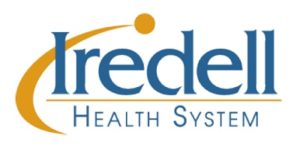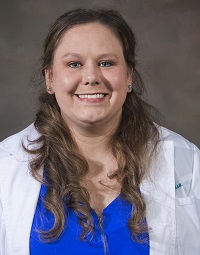
Special to Iredell Free News
Many children have bouts of restless behavior or have trouble listening and paying attention from time to time. You may think it’s just kids being kids.
But how can you distinguish between normal, childlike behavior from more serious problems, like attention-deficit hyperactivity disorder (ADHD)?
ADHD Awareness Month is recognized every year in October. This month, take the time to learn more about ADHD, its symptoms, and what to do if you believe your child may have ADHD.
What is ADHD?
ADHD is a neurodevelopmental disorder affecting over 6 million American children. According to the Centers for Disease Control and Prevention, nearly 12 percent of children in North Carolina currently have ADHD. It is diagnosed and treated more often in boys than girls.

“ADHD is a condition that leads to trouble focusing, extra energy/hyperactivity, and/or impulsivity that negatively affects the child in more than one setting of their life. For example, they may have this at church and at school, or at school and at home,” said Dr. Caitlin Basnight, a physician at Family Care Center of Taylorsville.
According to Basnight, it’s important that the symptoms of ADHD occur in at least two settings. If symptoms occur in just one setting, like only in one class at school, the cause is more likely to be something other than ADHD.
What are the symptoms of ADHD?
There are three major types of ADHD: inattentive, hyperactive/impulsive, and combined.
“With primarily inattentive ADHD, children usually have trouble focusing, which can present as trouble completing a single task, or following multi-step instructions.”
“For example, if you ask your 6-year-old to empty the dishwasher, they may start by emptying the dishwasher, then end up watching TV, then end up on the phone, then end up playing with the silverware, instead of just focusing on the one task and getting it done. Children may also be easily distracted and have a hard time remembering details, which can cause them to perform poorly on schoolwork,” said Basnight.
With hyperactive/impulsive ADHD, you may notice that your child has difficulty staying in their seat, is fidgety, frequently interrupts conversations, or seems to want to be constantly “on the go.” They may also be impulsive and take frequent risks, often acting without thinking. Your child may also have difficulty waiting for his or her turn at school or while playing games.
“I would say that the majority of my patients usually have a combination of hyperactivity/impulsivity and inattention,” said Basnight.
According to Basnight, boys tend to show more hyperactive symptoms, and girls show more inattentive symptoms, but both types can be present in either gender.
How can I tell ADHD from normal child behavior?
“The big thing is, number one, is this occurring in more than one setting? And number two, is it severe enough to have a significant impact on the child’s life? For example, does your child fail classes, have difficulty making friends, or frequently make decisions that are harmful to themselves or others?” said Basnight.
According to Basnight, the best way to tell if your child has ADHD is by taking them to their primary care provider or pediatrician and having them complete the appropriate testing and screening.
“Other conditions can cause symptoms that can look like ADHD, including, but not limited to, depression, metabolic disorders, developmental delay, and learning disabilities. So, if you think your child may have ADHD, it is best to have them evaluated by a healthcare provider,” said Basnight.
How is ADHD treated?
Children may receive a combination of medication, behavioral treatments, and special education for ADHD treatment.
“For preschool-age children, we often try behavioral interventions at first, but if this is not successful in helping manage the symptoms, or if the child is older than 5, the gold standard of treatment is with stimulant medications. Adderall, Concerta, and Vyvanse are some examples. There is also a non-stimulant medication approved for ADHD treatment called Strattera,” said Basnight.
Nine out of 10 children with ADHD respond to medication, although it can take time to find the medicine that works best for them.
“Another important piece of treatment is making sure to include school-based interventions, such as individual education plans (IEP), to help give your child the best chance for success in academics,” said Basnight.
No two children are exactly alike when it comes to ADHD symptoms and treatments. Your child’s primary care provider can help you understand the risks and benefits of each option so you can find the right approach.
LEARN MORE
Dr. Basnight practices at Family Care Center of Taylorsville, located at 1668 Highway 16 South. She is accepting new patients and treats people of all ages. If you would like to schedule you or your child’s next appointment, call 828-632-9736.
About Iredell Health System
Iredell Health System includes Iredell Memorial Hospital; Iredell Mooresville; two urgent care centers; Iredell Home Health; Iredell Wound Care & Hyperbaric Center; Community and Corporate Wellness; Occupational Medicine; the Iredell Physician Network and more. Iredell Memorial Hospital is the largest and only nonprofit hospital in Iredell County. The comprehensive healthcare facility has 247 beds; more than 1,800 employees; and has 260 physicians representing various specialties. Centers of excellence include Women’s and Children’s; Cardiovascular; Cancer; Surgical Services and Wellness & Prevention. The Health System’s second campus, Iredell Mooresville, is home to the area’s only 24 hour urgent care facility, as well as an ambulatory surgery center, imaging center, rehabilitation services, and physician practices. The mission of Iredell Health System is to inspire wellbeing. For a comprehensive list of services and programs, visit www.iredellhealth.org



